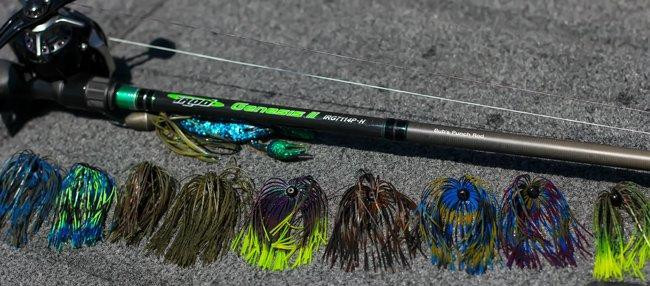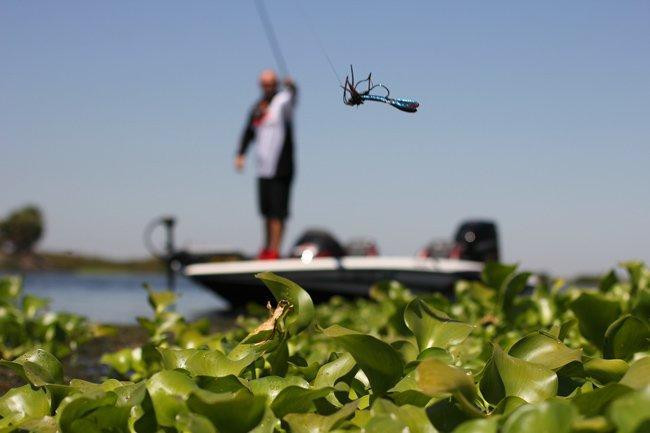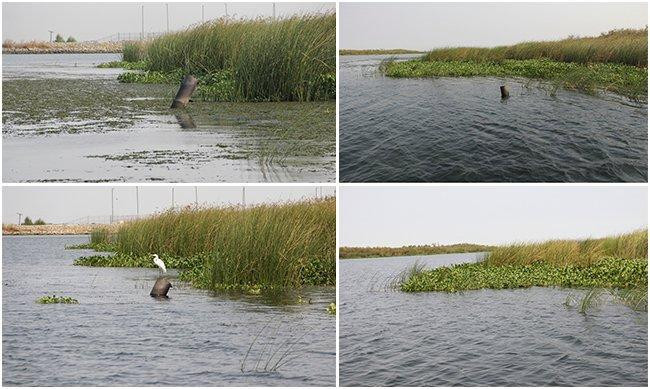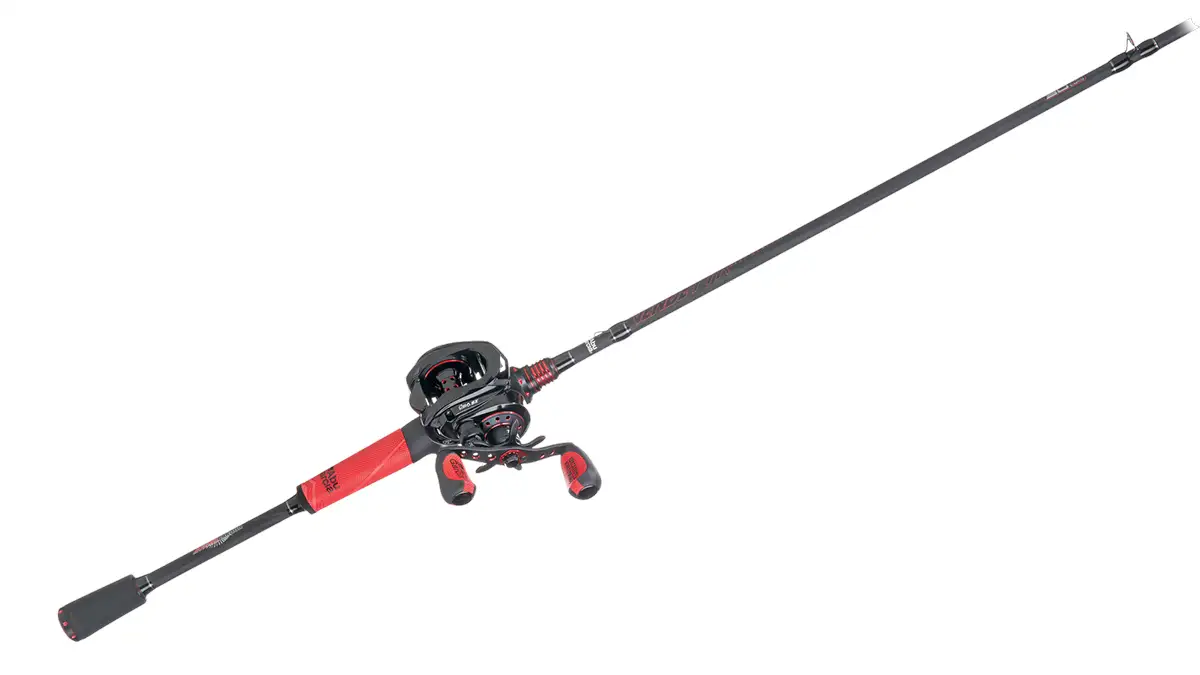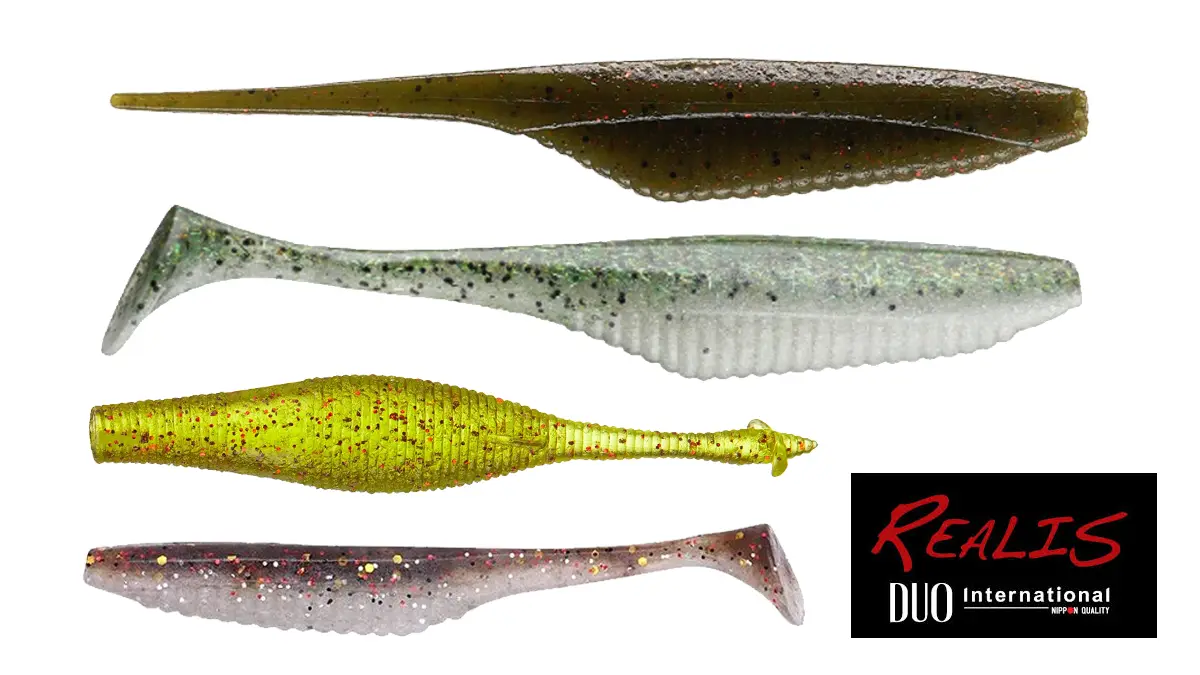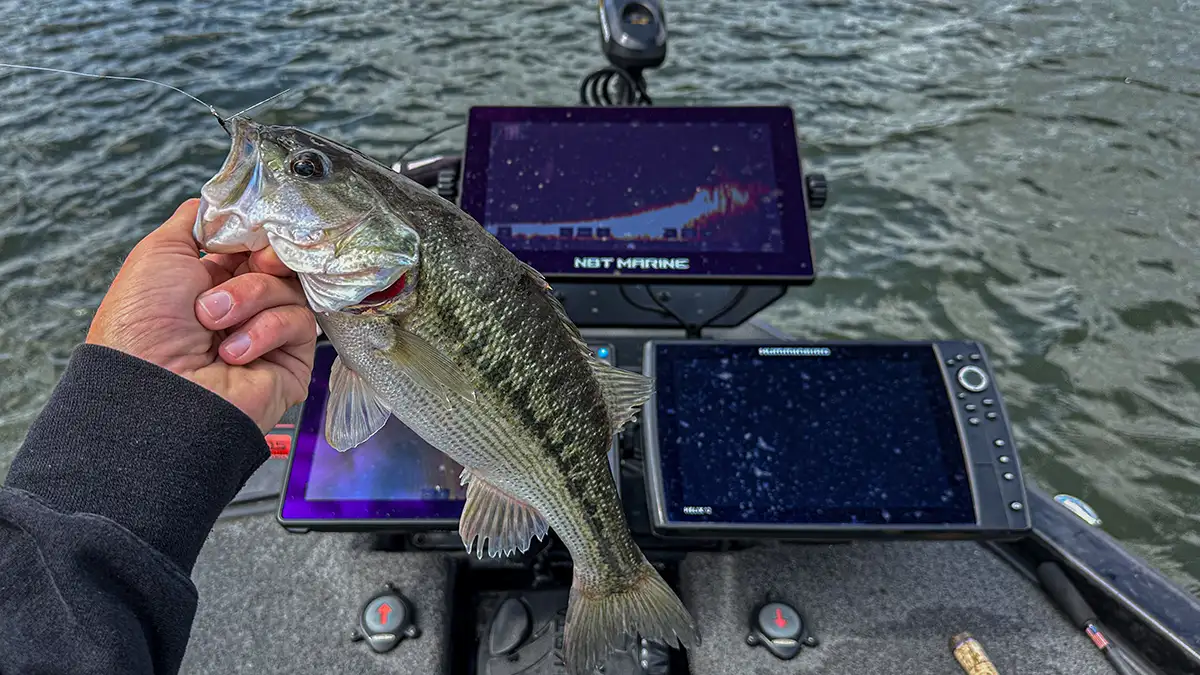Many new techniques and tackle have been introduced to the bass fishing world in the last two decades. One of the most popular techniques introduced on the California Delta is punching through thick matted vegetation. To punch, an angler needs a Texas rig with a tungsten bullet weight from 3/4 to 2 ounces in weight depending on the thickness of the mats.
The weight is needed to penetrate any type of heavy cover. It evolved from the flipping technique that Dee Thomas invented on the ever-changing Delta ecosystem. The many invasive plants flourishing throughout the California Delta make it impossible at times to fish most baits, so fishermen have learned to adapt with punching.
California professional bass angler and Paycheck Baits owner Bub Tosh is one of the pioneers of punching. Having the privilege of also growing up on the California Delta, Tosh has perfected the art of punching. Tosh started Paycheck Baits to insure he and other anglers had the best tackle to perfect the technique. Tosh has enjoyed tremendous success using the technique with numerous top 10 finishes and tournament wins on the Delta.
The Gear
- Rod – Tosh was tapped to design the perfect punch rod for IROD. His 7-foot, 11-inch heavy action Genesis II Bub Tosh Punching rod is perfect for the technique.”Your punch rod needs to have a good back bone to get those fish out of the heavy cover, but also can’t be so stiff it rips the hook out of their mouth,” Tosh said.
- Reel – Both Rods are paired with 7.3:1 reels spooled with 65-pound test braid. “A high speed reel is necessary to pull those fish out before they get stuck in the vegetation, and it also helps me make more flips than most anglers.”
- Weight – The introduction of tungsten gave anglers half the size in the same weight. Most of the time, Tosh tries to keep it as light as possible, his standard is a 1 to 1.5-ounce tungsten bullet weight. But with all weeds and cover on the Delta, he has used up to 2 ounces.”I Try and keep it as light as possible because when you start getting in the 2 ounce range, the weight sometimes punches out of the fishes mouth when you set the hook lowering your catch ratio.”
Note: When using 1.5 ounces or heavier Tosh uses 2 Paycheck Baits punch stops to peg the weight.
- Skirt – Tosh always uses a punch skirt because it not only adds action and bulk, but helps keep the bait from sliding down the hook. The punch skirt also helps the bait slide through all the vegetation easily and prevents the vegetation from getting wrapped on the bait.
- Hook and Knot – When you have 65-pound braid and a heavy-action rod, a heavy duty hook is a must for punching. Tosh uses a 4/0 Paycheck Baits straight-shank hook. It has a closed eye, which is necessary for the knot he ties.”There is only one knot you need to use when punching, and it is the snell knot,” Tosh said. The Snell knot allows the hook to “kick out” 90 degrees when the weight pinches on the hook eye on the hookset. To see Tosh tie the snell, watch this video.
- Bait – Tosh has used all the punch baits available, but most of the time he sticks to one bait now, the Yamamoto Psychodad. The key to the Psychodad is the belly, it has a slot where you can insert a rattle. But many popular options exist. Stick with baits that don’t have many appendages.”When a majority of the other anglers are punching beaver type baits, that noise from the rattle just adds a little something different. Which is why I can catch fish behind other anglers.”
- Color – When choosing colors, Tosh keeps it simple with either some kind of craw or bluegill pattern.”Right after the bass spawn in June, I will use red craw colors. Once the bluegill spawn in July, I will use bluegill colors, and then switch back to craw going into August and early Fall.”
The Technique
- Cast – Punching is a combination of pitching and flipping. The intent is for your tungsten weight to hit the surface first so it will “punch” through the cover. To achieve this action, as your bait reaches its target towards the end of the pitch, lightly thumb the spool while dropping the rod tip down pointing toward the target. This kills the momentum of the bait, causing the weight to stop and drop straight down.The objective is to have the heavy tungsten weight land first and straight down. If your bait does not punch through the cover, lightly shake your rod tip while allowing slack in your line. Keep lightly shaking, staying in contact with your line until you feel the bait penetrate the surface.
- Action – Try to initially keep the bait just under the mat surface. It will imitate a crayfish or bluegill feeding on the underside of the mat. After a few seconds, let the bait drop to the bottom while maintaining contact with your line as most bites will come on the initial fall. You can feather the speed of the drop by lightly thumbing the spool. Yo-yo the bait a few times before reeling in to make another pitch.
- The Bite – A lot of times you feel the tick of a fish biting your bait. But sometimes all you will feel is pressure. If you’ve yo-yoed the bait a few times and didn’t get hung, and then suddenly you can’t move the bait. That’s almost always a bass. Set the hook hard and try to get the fish up and on top of the mat if possible and keep it coming so he can’t turn his head back in the cover.
Narrow it down
The thousands of miles of levees that make up the California Delta can easily overwhelm an angler. With its wide variety in plant vegetation and types of cover, Tosh focuses on a few key factors to help him locate and catch fish.
- Vegetation – “When the vegetation is green, it is healthy and nutritious which means more oxygen and bait,” Tosh said. “The Division of Boating and Waterways (DBW) sprays an aquatic pesticide to try and control the invasive plants. After they spray, the vegetation dies, turns brown and basically becomes a desert with no life. So I stay away from brown and look for green.”
- Variety – When Tosh sees plant variety, he “catches big ones”. In Tosh’s opinion, when there’s a wide variety of plants located together, he knows that water in that area is full of nutrients and rich bottom soil. Such areas are going to attract lots of bait.
- Tide – Fishing tidal water can be very frustrating and difficult for a lot of anglers. Basically, there are two tides with two associated current flows. High tides occur during incoming current tides. Low tides occur during outgoing current tides. Tosh uses tidal current flow to pinpoint the position and feeding patterns of the bass.
“Look for banks with healthy vegetation and current pushing straight into it,” Tosh said. “T-crossings are ideal, where a slough comes to a T-shape at the end.”
During an incoming tide, the T-ending causes the water to churn and increase current speed. This subtle phenomenon pushes the bait around and can have a profound effect on the feeding activity. During an outgoing tide, look for similar physical characteristics that can cause disruption to current flow and bait movement.
Final thoughts
Punching in the summer and fall is a dominant technique and is proven to catch quality bass and win numerous bass tournaments. It requires a heavier than usual weight, narrow compact plastic and heavy lines and rods to get the fish back out through the thick matted vegetation. But it’s a great way to catch big bass others will often overlook. Just about anywhere there is cover, whether grass or lumber, you can pull out your big sticks and heavy tungsten weights and punch your way to the bass.



